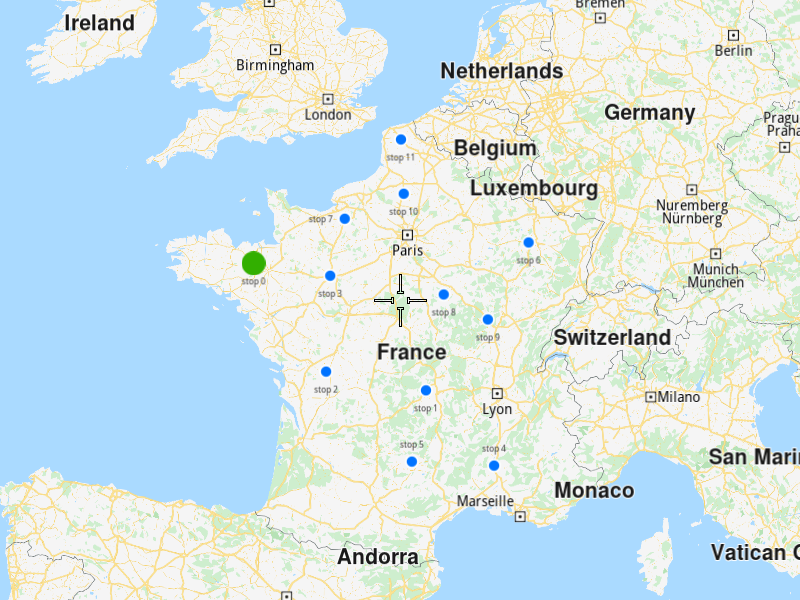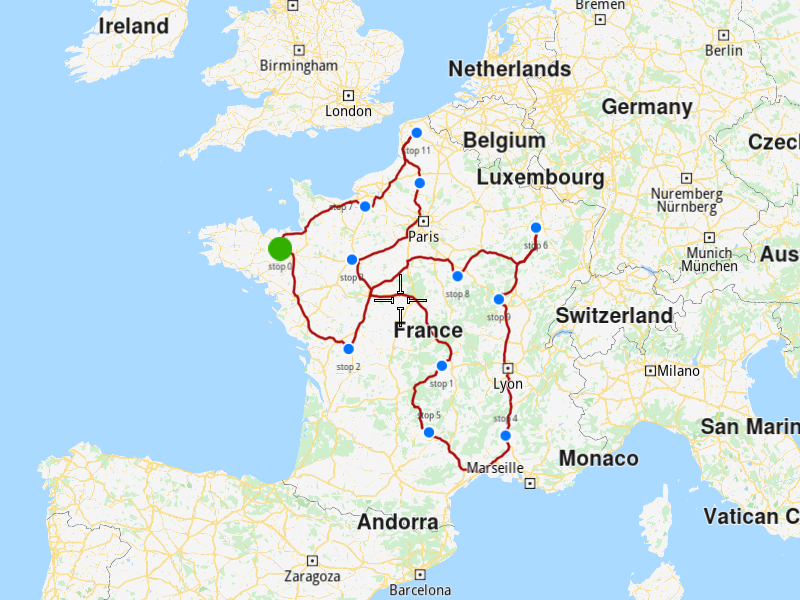Add optimization with fixed stops sequences¶
Add an optimization with fixed stops sequences set (the stops from a sequence will be visited in the fixed specified order) and display the solution on the map.
In this example there are 2 fixed stops sequences: [2,8,6] and [1,3].


Use case¶
Create an optimization where some stops must be visited in an exact order.
How to use the sample¶
First, get an API key token, see the Getting Started guide.
Download the Maps & Navigation SDK for C++ archive file for Linux or WindowsWhen you run the sample, an optimization will be saved, the solution will be returned and showed on the map. In the solution, you can see that stops 2,8,6 and 1,3 will be visited one after another exactly in this order.
How it works¶
Create a
vrp::StopListand add the stops to it.Create a
vrp::ConfigurationParametersand set the fixed stops sequences to it.Set the
vrp::StopListand thevrp::ConfigurationParametersto avrp::Optimizationobject.Create a
ProgressListener,vrp::Serviceandvrp::RouteList`, in which the solution will be returned.Call the
addOptimization()method fromvrp::Serviceusing the list from 4.), thevrp::Optimizationfrom 3.) and the progress listener.Once the operation completes, the list from 4.) will contain the solution of the optimization.
To display the stops and route on the map¶
Create a
MapServiceListener,OpenGLContextandMapView.Create a
LandmarkList,CoordinatesListandPolygonGeographicArea.Instruct the
MapViewto highlight theLandmarkListfrom 2.) to print the stops.Instruct the
MapViewto center on thePolygonGeographicArea.Create a
MarkerCollectionof typePolylineand add the route’s shape to it.Set the newly created
MarkerCollectionin the markers collections of the map view preferences.Allow the application to run until the map view is fully loaded.

